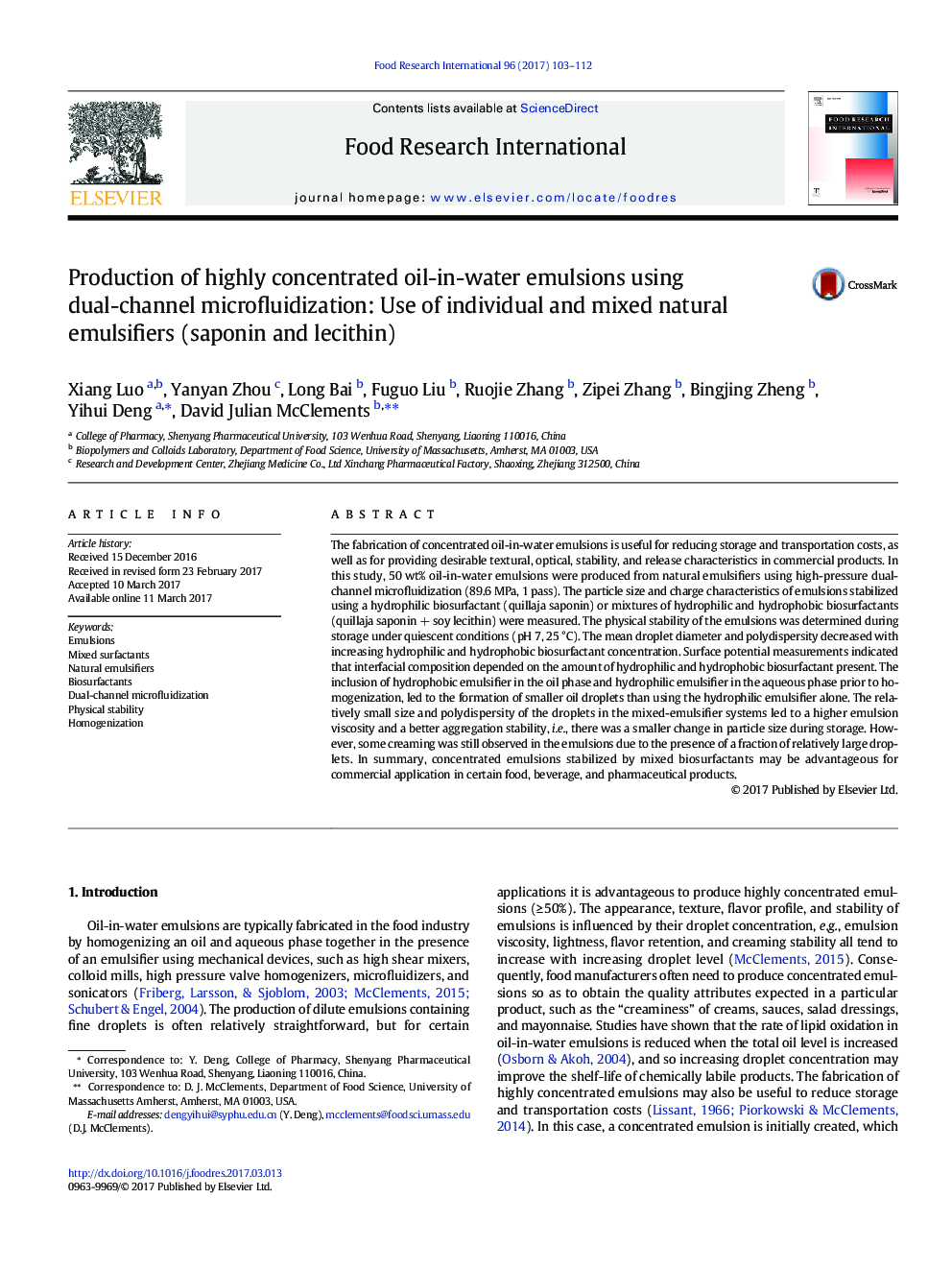| کد مقاله | کد نشریه | سال انتشار | مقاله انگلیسی | نسخه تمام متن |
|---|---|---|---|---|
| 5768260 | 1628454 | 2017 | 10 صفحه PDF | دانلود رایگان |
- Fine 50% O/W emulsions were produced by dual-channel microfluidization.
- Hydrophilic (saponin) and hydrophobic (lecithin) emulsifiers were used to form emulsions.
- Smaller droplets were produced using saponin & lecithin, than saponin alone.
- Natural saponins were as effective as synthetic Tweens at forming & stabilizing emulsions.
The fabrication of concentrated oil-in-water emulsions is useful for reducing storage and transportation costs, as well as for providing desirable textural, optical, stability, and release characteristics in commercial products. In this study, 50 wt% oil-in-water emulsions were produced from natural emulsifiers using high-pressure dual-channel microfluidization (89.6 MPa, 1 pass). The particle size and charge characteristics of emulsions stabilized using a hydrophilic biosurfactant (quillaja saponin) or mixtures of hydrophilic and hydrophobic biosurfactants (quillaja saponin + soy lecithin) were measured. The physical stability of the emulsions was determined during storage under quiescent conditions (pH 7, 25 °C). The mean droplet diameter and polydispersity decreased with increasing hydrophilic and hydrophobic biosurfactant concentration. Surface potential measurements indicated that interfacial composition depended on the amount of hydrophilic and hydrophobic biosurfactant present. The inclusion of hydrophobic emulsifier in the oil phase and hydrophilic emulsifier in the aqueous phase prior to homogenization, led to the formation of smaller oil droplets than using the hydrophilic emulsifier alone. The relatively small size and polydispersity of the droplets in the mixed-emulsifier systems led to a higher emulsion viscosity and a better aggregation stability, i.e., there was a smaller change in particle size during storage. However, some creaming was still observed in the emulsions due to the presence of a fraction of relatively large droplets. In summary, concentrated emulsions stabilized by mixed biosurfactants may be advantageous for commercial application in certain food, beverage, and pharmaceutical products.
149
Journal: Food Research International - Volume 96, June 2017, Pages 103-112
